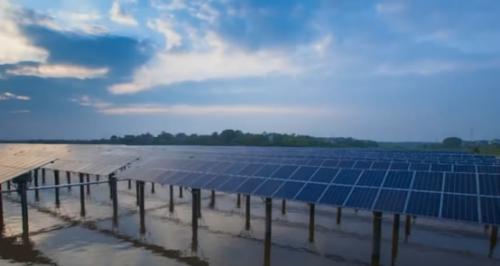By CGTN's Han Peng
Wang Jinzhen, the National Commissioner of the Chinese pavilion atAstana Expo 2017, has reiteratedthat the World Expo is not just a showcase of achievements from the past,but also a problem-solving platform for the future.
The theme of this year's Expo is "Future Energy," and Wang spoke to CGTN about China's contribution to the global energy sector.
"China is the largest producer and consumer of energy in the world, and in the last decade China has invested a lot in developing new (clean) energy technologies such as solar, wind and biomass," Wang noted.
This year witnessed the highest number of big Chinese corporations taking part in the Expo,including China National Petroleum Corporation, China Nuclear Power Group and the State Grid.

The China Pavilion, under the theme "Future Energy, Green Silk Road," is among the largest at the Expo village and the first one put into test operations. /CGTN Photo
"All these Chinese companies have just one purpose: to show to the world what they have achieved and find mutually beneficial cooperation," Wang noted.
But it's not just about making business deals. China wants to showcase to international visitors its strategic goal of boosting energy cooperation along the Silk Road Economic Belt, part of the Belt and Road Initiative put forward by President Xi Jinping in the same city Astana back in 2013.
The China Pavilion, under the theme "Future Energy, Green Silk Road,"is also featuring a life-size simulatorcockpit of ahigh-speed train."You can experience driving this fast train with a maximum speed of 350 kilometers per hour. You can also experience a nuclear power plant,and see how it works," Wang noted.
The Expo is forecast to attract around 5 million visitors from around the world, with a large number coming from China as Chinese have developed a particular interest in the event after Shanghai hosted the World Expo in 2010.